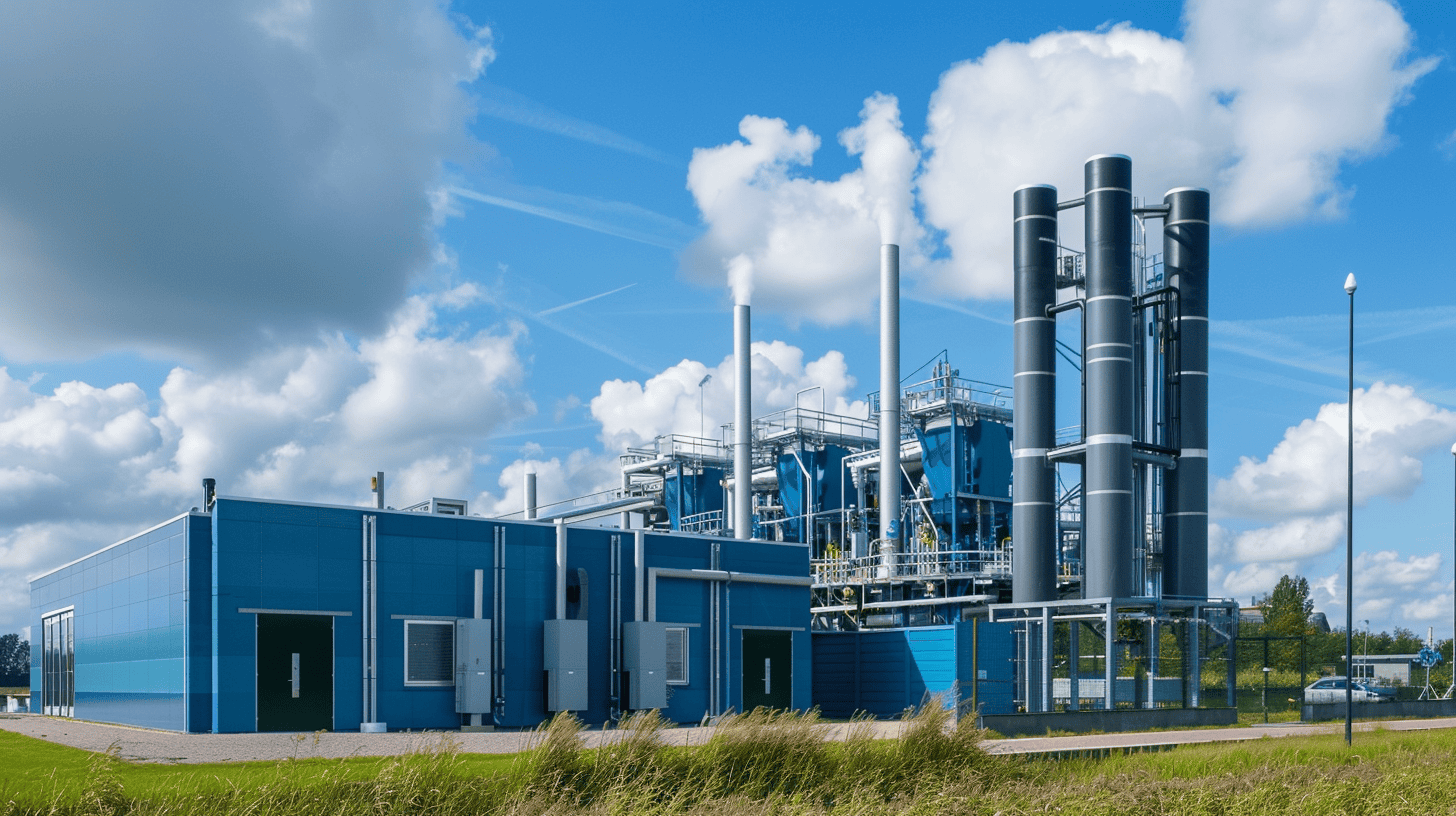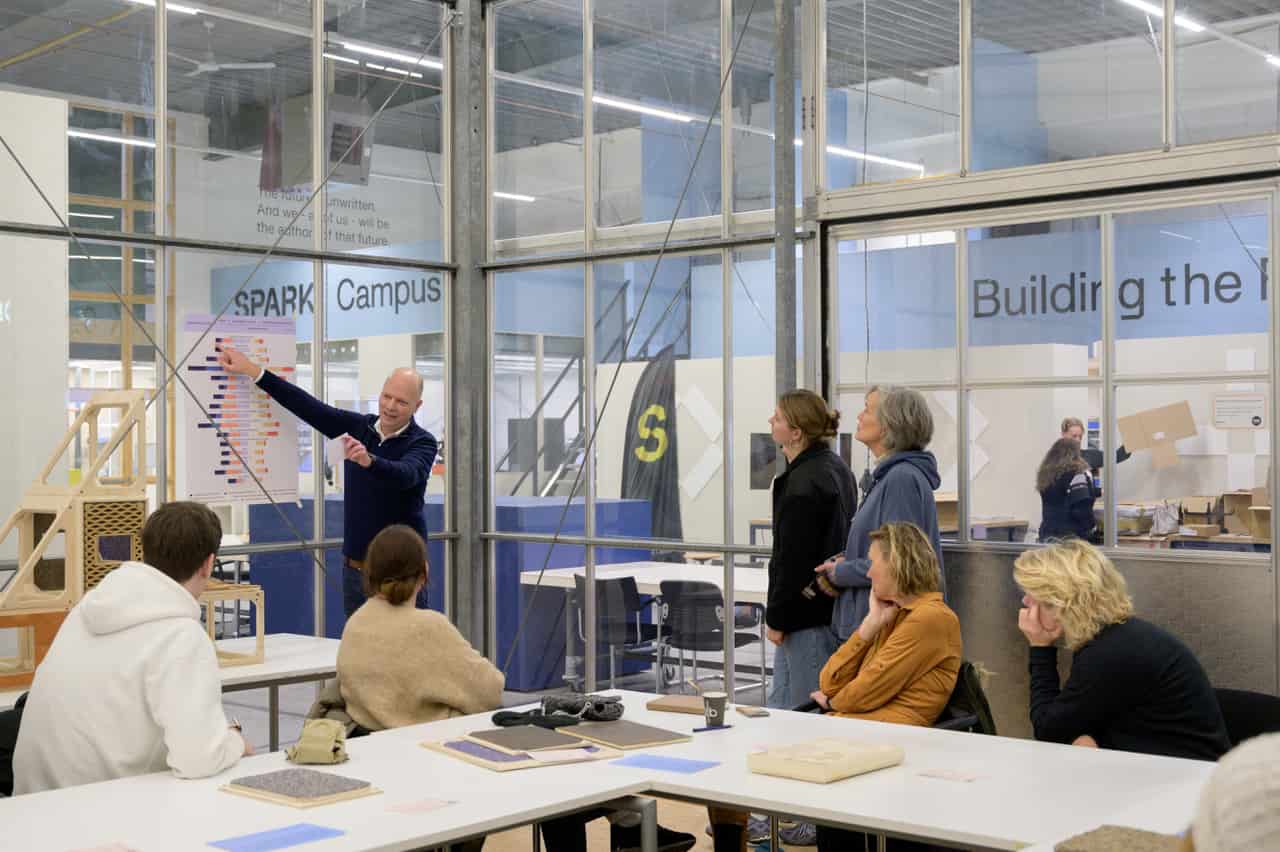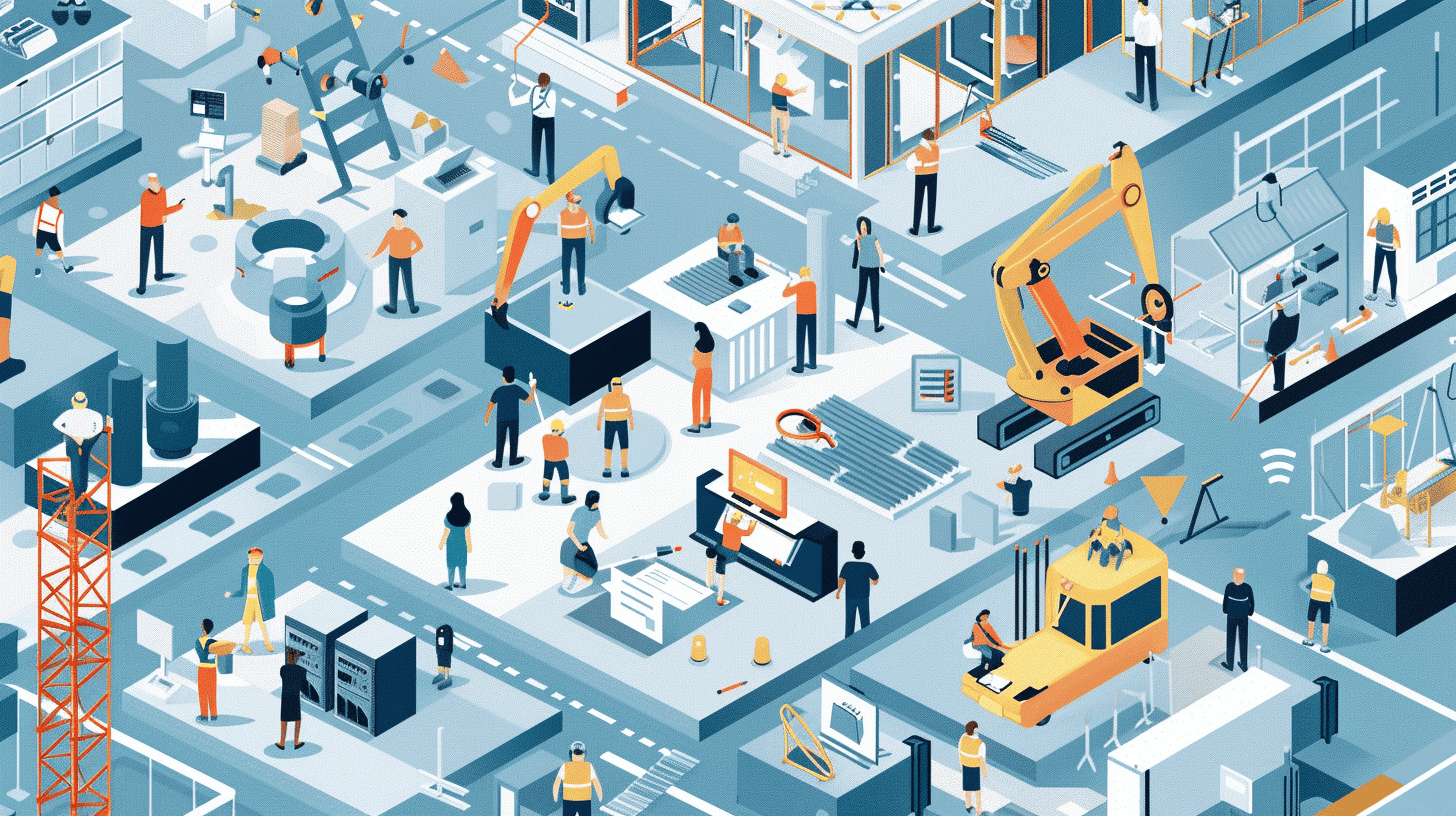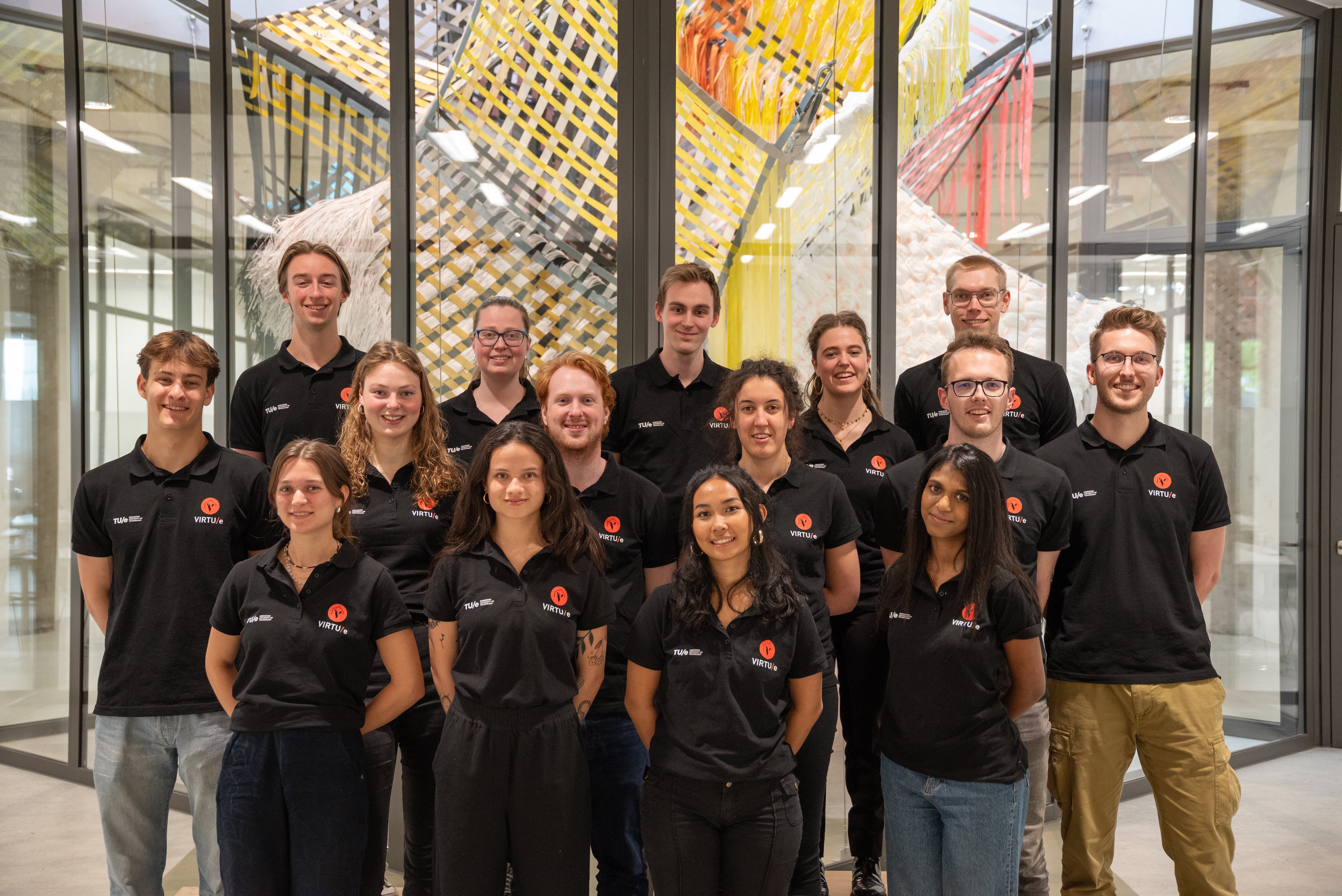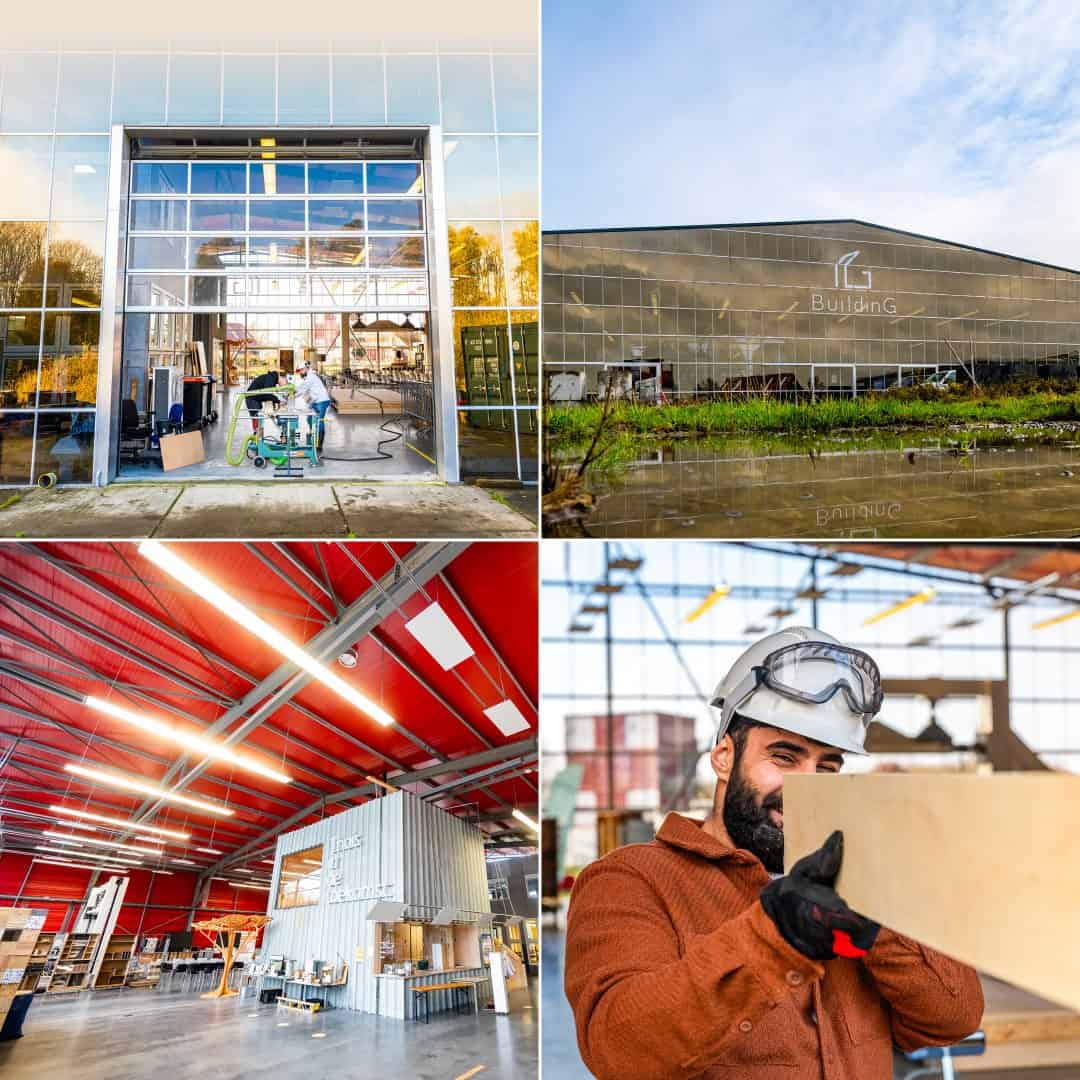
Outside the city center of Groningen, on the Zernike Campus, is where Build In Groningen (BuildinG) is housed. Anyone visiting the site will be short of eyes. On the 1,5-hectare site, they grow biobased building materials such as flax and hemp. Close by, students are busy building a circular building made entirely of used materials. A large shed with red interior walls forms the heart of the knowledge and innovation center; the test hall is set up for future-proof living.

BuildinG was founded in 2017 by the Economic Board Groningen and the Hanzehogeschool in collaboration with TNO and Bouwend Nederland. The knowledge center originated from the earthquake dossier, says program leader Jelle Pama. “We are facing an enormous task in Groningen. In the new compensation scheme that came out of the parliamentary inquiry, ‘Nij begun’ (New Beginnings), there are fifty measures. Measure 28 reads, ‘All homes that are now being reinforced, we are also going to make them more sustainable.’ And measure 29: ‘For all homes in Groningen, there must be additional sustainability options.’ Our region has an enormous opportunity to become a leader; nowhere in the Netherlands is there such an incentive to make homes more sustainable as here. At the same time, However, nowhere is it more sensitive to have a sustainable, future-proof home than here.” That also means it takes a lot of skilled workers to get the job done. Innovation of products and processes is indispensable in this regard.
The program Regionaal Bouwen aan Human Capital
Construction is innovating to achieve a clean, circular, and future-proof living environment. With the emergence of new technologies such as artificial intelligence, 3D printing, and sustainable concrete, the construction industry is in transition. For these innovations to land successfully in practice, professionals need new skills. With the Regional Building for Human Capital program, TKI Bouw en Techniek, the Top Consortium for Knowledge and Innovation, aims to accelerate the development of these skills among both current and future professionals. An important part of this is the development of a scalable regional approach around Human Capital. After a duration of over a year, the program in its current form is coming to an end. In this series, we take stock and ask the parties involved, including four regional Hubs (North, East, South, and West), about the main results.
Learning by doing
Under the Regional Building Human Capital program, they established eight projects in Groningen. “Learning by doing is the mantra here. That fits in very well with the Sharebouw& Techniek concept, which is also about connecting working, learning, and innovation. The construction sector consists of a lot of SMEs. Of the more than four hundred Bouwend Nederland-Noord members, seventy percent employ fewer than ten people. You don’t reach them by organizing pompous events, but by setting up projects where you bring knowledge institutions and construction companies together,” Pama clarifies.
The Minerva Hub showcase is one of those eight projects. The main question is: how do you ensure that knowledge about the design and construction process to build circularly can land in the curriculum of knowledge institutions? To answer this question, students from the Hanzehogeschool (HBO) and the Alfa-college (MBO), together with a construction company, set to work on designing a small pavilion made entirely of secondary materials. The students are now in the process of building the house and are receiving support from several SME companies. “The knowledge we gain will become part of the curriculum of the 150 students now taking the bachelor’s degree in Built Environment at the Hanzehogeschool. This applies to another 150 mbo students at Alfa College. Moreover, a physical building inspires the environment,” Pama said.
From Plant to Building is another example. This showcase aims to gain new knowledge about the properties and applications of bio-based building products – such as hemp, flax, or miscanthus. Or Trust in Timber, which looks at what it takes to gain confidence in designing and building with wood structures in large buildings. Pama: “Using wood has a positive effect on the carbon footprint of buildings. Clients, engineers, and residents need more confidence in building large structures with wood rather than concrete. Students, engineering firms, housing associations, and companies are working together on this project to create a showcase to show that it really can be done.” The project will be followed up because of the great interest from companies.
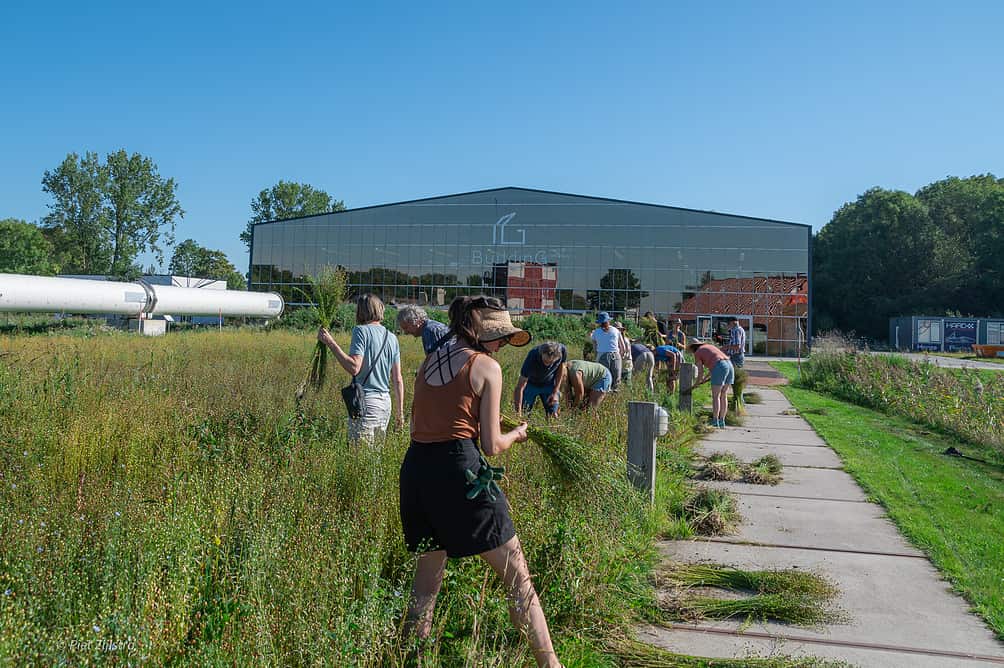
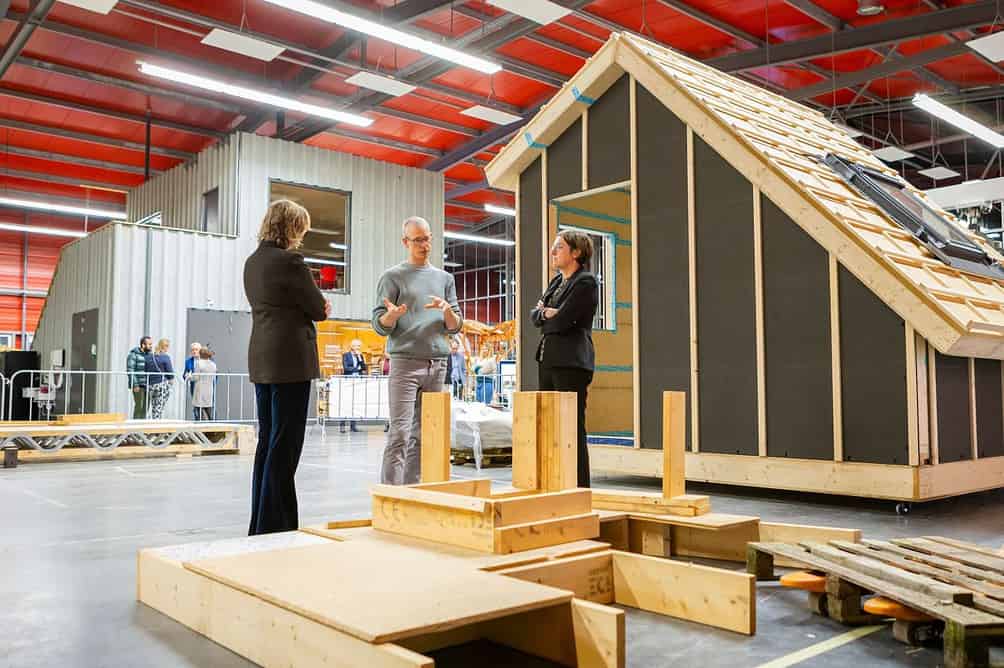
‘Setting up new processes takes time’
The most important lesson they learned last year at BuildinG? “It takes time to set up a process, and connection has to be stimulated continuously. You can set something up or organize a meeting, but how do you follow it up structurally if the urgency is not yet very high? Sure, we all know that the construction industry must become more sustainable to reduce CO₂ emissions, but this is still a dot on the horizon for many companies. We also want to clarify that those new rules are coming soon, so it’s smart to look at circular options now.”
Pama refers to Minister for Housing and Spatial Planning Hugo de Jonge’s recent statements. For example, the MPG (the Environmental Performance of Buildings) will go from 0,8 to 0,5 five years earlier than planned: from Jan. 1, 2025, companies must comply with it (instead of 2030). This means a building must not cause more than 0,5 euros of environmental damage per square meter annually on average. In the follow-up process of the Regional Building for Human Capital program, BuildinG will develop, among other things, a sustainable, modular, detachable, and scalable starter home with an MPG of 0.3. By 2024, the first two homes should be completed; ultimately, BuildinG will build 22 units with partners from business and government. “We are simply going to learn from building those homes. We will organize meetings and workshops and work with timber builders, architects, and SMEs. All the knowledge we gain, we share with the other hubs.”
Confidence in the new generation
Digital, more sustainable construction also requires a new kind of worker. For example, Pama recently spoke with a company manufacturing large wood structures. “He said, ‘I’m looking for personnel who can set up the digital side in our factory.’ People with ICT knowledge and a construction background.’ There will only be more demand for that in the future. We are trying to respond to that here at Hanze University as best we can.”
In that respect, the BuildinG program leader has plenty of confidence in the young generation. “I see that they are curious and quickly master digital technologies. Moreover, students increasingly find it important for companies to engage in circular construction and have their processes set up digitally. It is up to us to prepare the professionals of tomorrow as well as we can and to show today’s professionals what is possible. That’s where the Regional Building Human Capital program has really helped here in the region.”
“Students find it increasingly important that companies engage in circular construction, and have their processes digitally set up.”
Jelle Pama



